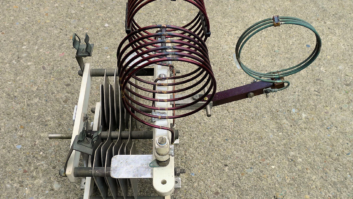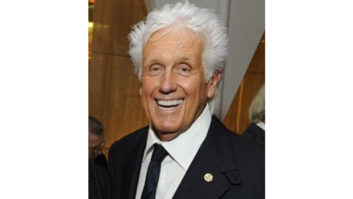Service with a smile
Dec 1, 2000 12:00 PM, Skip Pizzi
The adage of the new media age is “content is king,” and such content attracts audiences. While this truth is undeniable, it’s high time that the service side of the equation receives its due. The value of a robust and efficient delivery system is fundamentally important, independent of the content it carries.
Radio has been a successful service throughout its history. Once thought of as an upstart that would never last, radio has proven to be a viable, popular and resilient medium. It established itself as a pioneer of electronic media, and then survived the competition by reinventing its content to adapt to shifting audience preferences. During these changes, the service has remained essentially the same, with only incremental improvements. (The move to FM must be considered a substantial change in this respect, but its service and business models are essentially the same as that of the original AM band.)
This leads to a statement of the service-value argument: A good delivery system offers content that makes good business sense and is popular. Service is the real king, the anchor of the business. Content is fickle and adaptable. Popular content combined with effective delivery service is the true killer application in the broadcast domain.
In an environment of scarcity, such service has another attraction: It is the searchlight in the sky that attracts everyone’s attention. This natural attraction stimulates advertisers to place their messages there, thus creating the business engine that fuels the broadcast industry.
Looking ahead Now consider the emerging competition and how it compares in terms of service. Streaming media on the Internet offers a wide range of content and increasingly hi-fi audio quality, but its accessibility is limited to the computer platform or Internet browsing appliance. On another front, satellite radio (S-DARS) will be limited, at least in the early going, to a new, mobile-only receiver. This implies that terrestrial radio will remain the only aural medium that reaches equally well into all listening venues (home, car and workplace) for the near- to mid-term.
It remains to be seen what quality of service S-DARS will provide to the automotive environment. The amount of reliance on terrestrial repeaters is unknown. The uniformity of reception among vehicles, and between factory-installed vs. aftermarket units, is also questionable. Another variable involves the use of substantially different satellite technologies by the two service providers (Sirius Satellite Radio will use a highly elliptical orbit [HEO] system while XM will use the geostationary [GEO] approach).
Assuming that S-DARS provides a viable service for the mobile platform, its future for fixed receivers remains in doubt. Building penetration will likely not be like FM radio’s, although in markets with terrestrial repeaters, it may have some reasonable abilities in this respect. Otherwise, external or interior window-mounted antennas will be required for S-DARS reception in buildings.
On the Internet side, migration from the computer-based receiver with dial-up access is almost assured in the next several years, with dedicated Internet radios already in production and broadband Internet access advancing quickly in many areas. This could allow high-fidelity wired service (superior to FM) for Internet radio content soon. Meanwhile, wireless and broadband wireless Internet access could conceivably extend on-line radio to mobile and portable receivers, eventually with high-fidelity audio. The cost and possible metered pricing of such service could be an obstacle to long-term radio listening via wireless Internet, but some observers believe that so-called 3G (third-generation) wireless systems will someday provide a delivery method that allows streaming on-line media to become fully competitive with today’s terrestrial broadcast media.
If this proves true, wireless Internet is more of a future threat to service superiority than is S-DARS. Of course, there is no real barrier to entry for terrestrial broadcasters to offer their content stream(s) via the Internet, while continuing terrestrial broadcast service in parallel.
Terrestrial radio service, therefore, seems destined to continue largely unchallenged as a viable, universally accessible and cost-effective content-delivery method for some time. This assumes that the content delivered on these services offers significant value to listeners. If that is challenged by other media (such as S-DARS), terrestrial radio may need to adjust its content, as it has in the past. However you slice it, it’s hard to keep a good service down.












